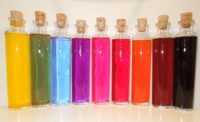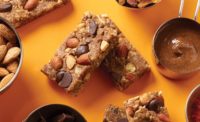Less than half of the population consumes nutritional bars and shakes, leaving plenty of room in the category, a new report by Packaged Facts shows.
Retail sales of nutritional shakes and bars is expected to rise 8.3 percent annually through 2021 to $13.1 billion — up from the $8.8 billion generated in 2016, according to “Nutritional Shakes and Bars: U.S. Retail Market Trends and Opportunities.” Between 2012 and 2016, the category grew by 9.5 percent.
More specifically, nutritional bars brought in $4.44 billion in 2016, up 8.7 percent from 2015. Packaged Facts predicts nutritional bar sales will pull in $4.6 billion in 2017 and $5.1 billion in 2018.
While growth rates are expected to slow, there is still opportunity in the category, data show. Of the consumers Packaged Facts surveyed in September 2017, 51 percent said they buy neither nutritional bars nor shakes. Furthermore, 39 percent of surveyed consumers reported buying nutritional bars, while 22 percent buy shakes.
Packaged Facts noted there’s additional potential among Millennials, Baby Boomers and health-conscious shoppers looking for interesting flavors and “clean,” sustainable ingredients.
“Nutritional shakes and bars are expected to continue experiencing growth in niche areas as consumers persist in seeking out novel flavors and ingredients,” the report reads. “Increases in disposable personal income will support purchases of premium shakes and bars, including non-GMO, organic, ‘free-from’ and superfood-infused types.”
Demographically, 46 percent of consumers ages 18-34 purchase nutritional bars, followed by 45 percent of consumers in the 35-44 bracket. Just 32 percent of shoppers ages 55-64 and 29 percent of the 65-plus bracket purchase nutritional bars.
Of the consumers who buy snack bars, 67 percent seek high protein content, while 53 percent look for low sugar content. Half of consumers desire high fiber content, while 36 percent seek out “healthy fats.”
“Marketing strategies focusing on health and the delicious taste of products will help nutritional shakes and bars to expand their appeal demographics that underindex in consumption, such as Baby Boomers,” the report said.





